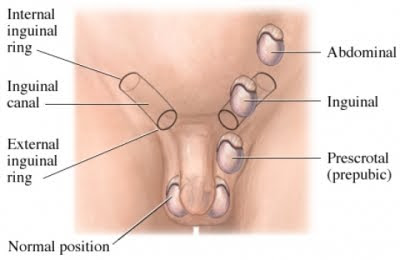Description of Morning Sickness
If the nausea and vomiting persist or worsen the woman may have a rare condition called hyperemesis gravidarum. This exaggerated form of morning sickness occurs in fewer than 1 in 250 pregnancies. The symptoms of this condition are frequent and severe nausea and vomiting, inability to “keep anything down," weight loss, signs of dehydration (severe thirst, dry lips and tongue, confusion, rapid breathing and an increased heart rate) and starvation. This condition is treated by immediate hospitalization with intravenous hydration until the woman can tolerate foods and liquids by mouth.

Emotional factors also influence morning sickness. Morning sickness is unknown in some more primitive societies where lifestyles are simpler, more relaxed and less demanding.
There is evidence that shows that some women with unwanted, unplanned pregnancies suffer debilitating nausea and vomiting, yet experience no morning sickness at all in pregnancies they are happy about. The fact that morning sickness is more common and tends to be more severe in first pregnancies supports the concept that both physical and emotional factors are involved. Physically, the novice pregnant individual is less prepared for the onslaught of hormones and other changes than one who has been through it before.
Treatment of Morning Sickness
antacids that are low in sodium and available over-the-counter
vitamin B6
sugar solution that is available over-the-counter
acupressure wristbands (used for seasickness)
antihistamine (prescribed by a doctor) only if the following concerns are evident: persistent vomiting, insufficient weight gain and signs of dehydration
Please talk to your doctor before taking any medication.
Self CareThere are many self care methods of alleviating the symptoms and minimizing the effects of morning sickness. These include:
Eat four to six small meals per day, instead of three heavy meals. An empty stomach and low blood sugar, resulting from long stretches between meals, can trigger nausea, as can eating too much at one meal.
Eat crackers or dry toast 20 to 30 minutes before getting up in the morning, while slightly propped up in bed. Bland foods such as crackers or pretzels may help at any time of day when you feel nauseated.
Minimize the intake of fluids with meals. Instead drink small amounts of fluids frequently between meals.
Eat a diet high in protein and complex carbohydrates, both of which fight nausea.
Drink plenty of fluids, especially if you are losing them through vomiting. If they are easier to get down than solids when your stomach is upset, use them to get your nutrients.
Herbal teas, fruit juices and popsicles are helpful in combating the nauseated feeling.
Take a prenatal vitamin supplement to compensate for nutrients missed through not eating.
Avoid the sight, smell, and taste of foods that make you queasy.
Eat before nausea strikes. Food will be easier to get down and may prevent an attack.
Eat in bed to avoid an empty stomach and to keep the blood sugar on an even keel.
Before you go to bed at night, have a snack that is high in protein and complex carbohydrates.
Get extra sleep and relaxation. Both emotional and physical fatigue can exacerbate morning sickness.
Greet the morning in slow motion – rushing tends to aggravate nausea.
Brush teeth with a toothpaste that does not increase the queasiness and rinse the mouth with a good rinser after each bout of vomiting, as well as after each meal. Not only will this keep the mouth fresh and reduce nausea, it will also decrease the risk of damage to teeth and gums that can occur when bacteria starts working on the regurgitated material in the mouth.
Minimize stress. Morning sickness is more common among women who are under a great deal of stress, either at work or home.







